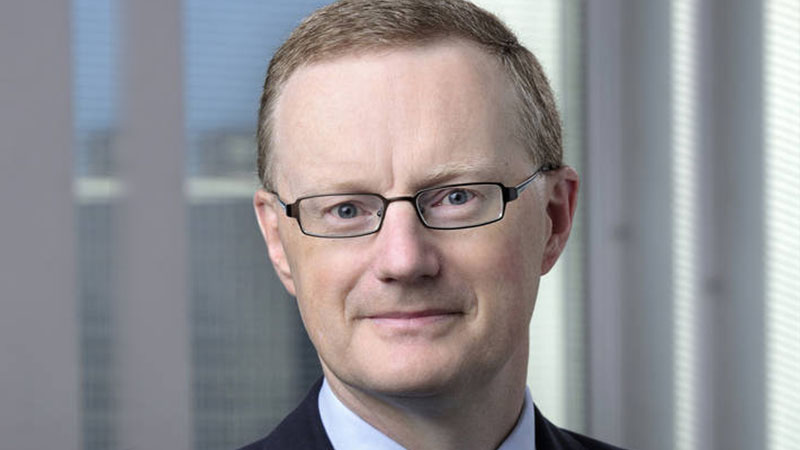Speaking at the Walkley Awards for Business Journalism on Tuesday (22 March), Reserve Bank of Australia (RBA) governor Philip Lowe considered the lending market, following APRA’s intervention in November.
The prudential regulator had raised the minimum interest rate buffer banks needed to use to assess borrowers’ serviceability to 3 percentage points above a loan product rate, from the previous 2.5 percentage points.
Dr Lowe has recently said a pick up in the cash rate from the current record low of 0.1 per cent this year seems plausible.
Economists have speculated the first increase will take place at around August or September, with the earliest prediction yet being June, from AMP and CBA.
Some lenders have expressed concerns that there will be pain for home loan customers who have never experienced a rate rise, including ANZ group executive for retail and commercial Mark Hand.
But Dr Lowe has said the banks are now more responsible in their lending than they were previously.
“I don’t have at the moment any concerns that [home loans are] being extended in a way that’s weakened, in a way that’s prejudicial to the stability of the economy or the financial system,” Dr Lowe reflected at the Walkley Awards.
“You can probably always find someone who’s got a loan and maybe you think they shouldn’t have got a loan, but the vast bulk of borrowers … are being assessed on very reasonable terms and have to apply a 3 per cent interest rate buffer. So if you get a mortgage at 2.5 per cent, the bank have to make sure you can pay about 5.5 per cent.
“And we can tell from the characteristics of the loans that have been made, they’re much better than they were a while ago.”
He added the median borrower are two years ahead of their repayment schedule, compared to being one year ahead in 2018. Further, many borrowers had placed more money into their offset accounts.
“That’s not to say there aren’t going to be problems, especially if interest rates have to up by a large amount,” Dr Lowe said.
“The buffers in the system are being built up. That stands as we can see it.”
ANZ economists have similarly predicted borrowers will be shielded by higher savings rates and accelerated wage increases when the cash rate does eventually pick up.
Last year, the Reserve Bank also observed the majority of mortgage holders maintain higher loan repayments than required.
It had also found that home owners had built up their cash buffers as a “side effect” of surging house prices.
Inflation, wages and the cash rate
Since the onset of the pandemic, the Reserve Bank has maintained it will not increase the cash rate until annual inflation is “sustainably” within the 2 to 3 per cent target range.
In underlying terms, inflation in Australia is at its highest since 2014, reaching 2.7 per cent in the year to December.
But for the central bank to be convinced that inflation can be sustained within the target range, it wants to see annual wages growth surpass 3 per cent.
Last year, the wage price index rose by 2.3 per cent, with the broader measure including bonuses increasing by 2.8 per cent.
Meanwhile, the recent invasion of Ukraine and subsequent sanctions against Russia has created a supply shock, raising the prices of commodities such as gas and affecting supply chains.
As Dr Lowe explained on Tuesday, there are two main issues at the fore for the RBA board, with the first being how persistent are the supply-side problems and long will they keep pushing up prices.
“At what point will some of those price increases be reversed? Because it’s quite possible that these big price increases occurred, that they’re not repeated, the prices normalise and that after a spike inflation comes back down again,” he said.
“So the question is, how long these supply-side pressures can last at some level.”
The second main issue for the RBA board is the labour market and wages growth. The spike in inflation will only come back down if labour costs don’t respond too much, Dr Lowe said.
Previously, businesses had reported to the RBA that they would not increase wages above a rate of around 2 per cent in order to retain competitive pricing of goods and to hold onto market share.
However, companies are now lifting prices, and workers have begun to demand pay rises as high as 6 per cent to account for inflation. Dr Lowe has called the movement a shift in inflation psychology.
At the same time, the Reserve Bank is still striving to achieve its mandate of full national employment.
“There’s a huge benefit to the country in getting people jobs, it gives them opportunity and improves the community they’re living in,” Dr Lowe said.
“So wherever we can, we’ll keep interest rates very stimulatory to get people back into jobs. How long we can do that for, I’m not sure, but that’s my priority at the moment.”
[Related: ‘Plenty of scope’ to ease regulatory burden: APRA chair]
 ;
;
